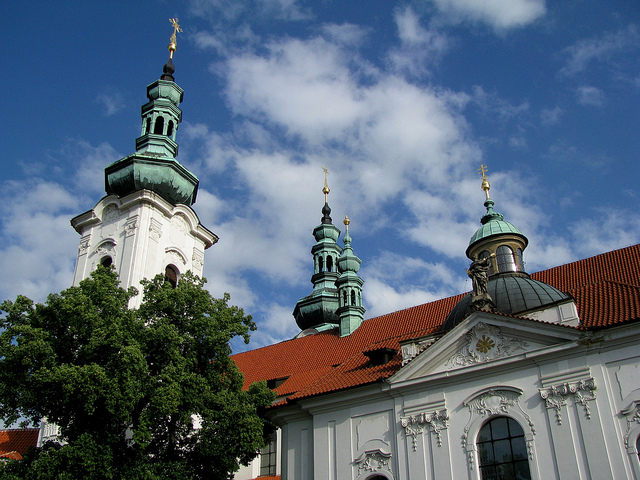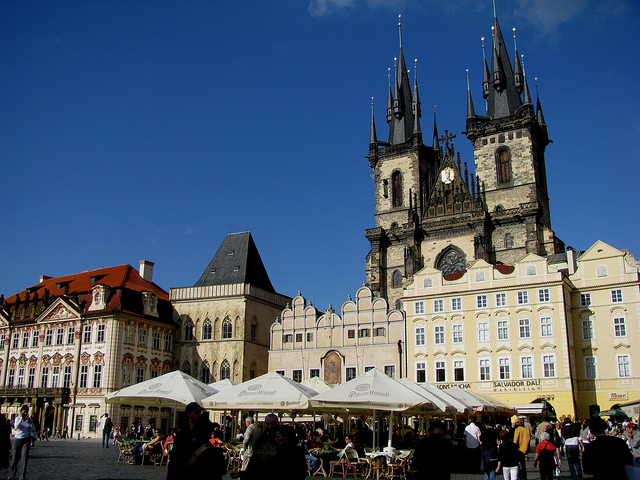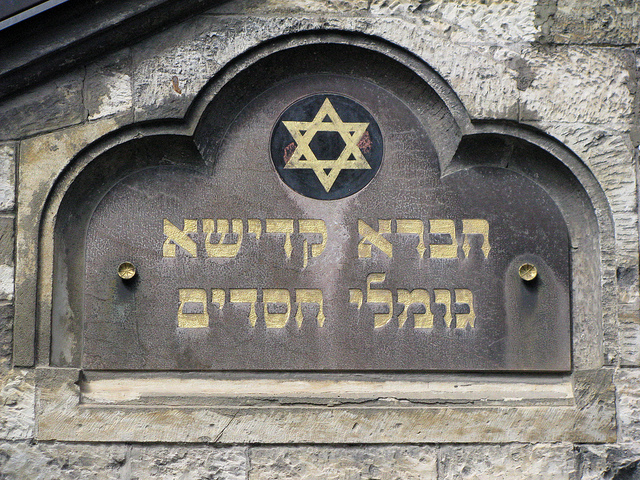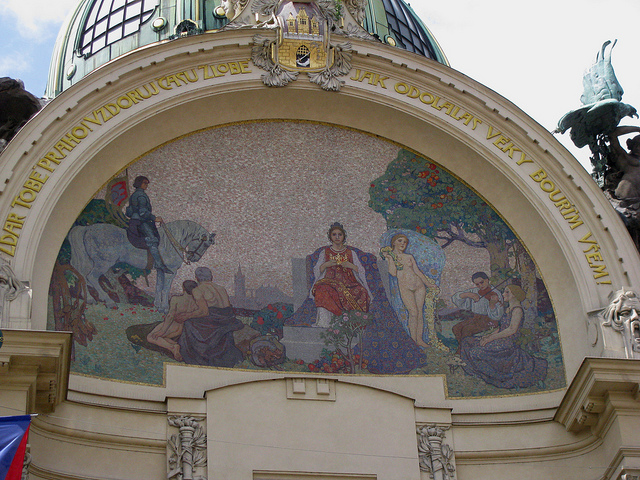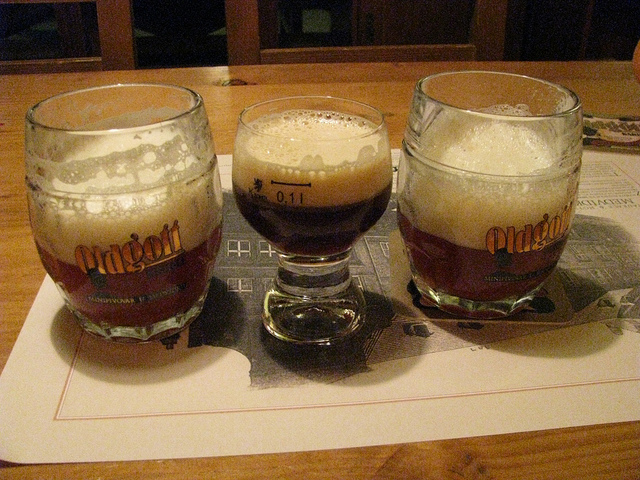From the gardens on the eastern side of Strahov Monastery we had a phenomenal view of the entire City of Prague, with the Prague Castle complex to the left, the Vltava River in the middle, and the modern (in)famous television tower on the horizon, a modern structure started during the Communist regime and finished in the 1990s that is not much beloved by the residents. On the right hand side we were looking at Petrin Hill whose most well-known landmark is a miniature version of the Eiffel Tower, exactly one fifth the size of the real Eiffel Tower. It opened in 1891, two years after the Eiffel Tower in Paris. Looking over the city it was plainly obvious why Prague enjoys the moniker “City of 100 Spires”.

Great view over Prague from Strahov Monastery
We strolled back over to Castle Hill and stopped on the square behind Cernín Palace, the longest Baroque building in Prague which now houses the Ministry of Foreign Affairs and also served as SS headquarters during World War II. On the east side of the square is the Loreto, Prague’s most renowned place of pilgrimage, completed in 1626 at the order of a Czech aristocrat who was eager to promote the legend of the Santa Casa of Loreto, said to be the house where the Archangel Gabriel told Mary about the future birth of Jesus. The original house was located in the town of Loreto in Italy, but 50 replicas of the Loreto were built in Bohemia and Moravia. The baroque bell tower of the Loreto holds a carillon with 30 bells that were cast in Amsterdam in 1691.

The Loreto
The Capuchin Monastery, founded in 1600, is located on the north side of the square and still displays some canon balls embedded in the façade. From here we walked down the hill to Hradcany Square, just outside the western gates of Prague Castle. Several palaces and historic buildings surround the square, including the Salmov Palace, the Schwarzenberg Palace, the Carmelite Monastery, Hradcany Town Hall, Tuscany Palace, Martinic Palace and Sternberg Palace.

The sgraffito facade of the Schwarzenberg Palace
The newly renovated Schwarzenberg Palace dates from the late 1500s and features an amazing Renaissance-era sgraffito façade. Columns remembering the Black Plague adorn the centre of the square in front of the main entrance to Prague Castle. Late 19th century street lighting has been restored with historically accurate gas lighting.

Authentic gas street lighting from the 19th century
At the entrance of Prague Castle we witnessed the Changing of the Guards, an hourly ritual that attracts large crowds of onlookers. Prague Castle is the city’s number 1 tourist attraction and it has magically survived countless fires, invasions and even world wars. Founded around 860 AD, various Czech dynasties occupied this expansive castle complex that was reconstructed throughout the centuries. The Romanesque style was introduced in the 13th century, Gothic rebuilding took place under Charles IV in the 13th century, and an enormous fire destroyed a large portion of the complex in 1541.

Looking towards the entrance of Prague Castle
Habsburg Emperor Rudolf II introduced Renaissance architecture to the castle in the late 16th century, and Austrian Empress Maria Theresa initiated a rebuilding in Baroque style in the second half of the 18th century and gave the entire complex a unified appearance. Since 1918 Prague Castle is also the official residence of the president of the Republic. We passed through two baroque courtyards to the front façade of the St. Vitus Cathedral, the largest and most important church in the Czech Republic. Saints, kings and princes have been buried here, and the kings of Bohemia were crowned here until 1836.

The Western facade of St. Vitus Cathedral
My expert guide Petra explained that St. Vitus Cathedral was built in the Gothic style, and although construction of this landmark began in 1344, it was not finished until 1929. The western façade of the towers indeed show many 20th century details including images of the architects. Starting with the founding of a small round church by St. Wenceslas in the 9th century, St. Vitus is the third church in this location and a strong symbol of Czech nationalism. Upon entering the cathedral, Petra explained that the eastern part of the cathedral is medieval while the western part was completed in the 20th century. To the untrained eye it is very difficult to discern a difference, but the colourful stained glass windows by Alfons Mucha are a magnificent example of early 20th century Art Nouveau. Czech artist Frantisek Kysela designed the rose window on the Western front between 1925 and 1927.

The Mucha Window of St. Vitus Cathedral
In a walk through the cathedral Petra pointed out the tombs of Habsburg monarchs in the centre of the cathedral’s medieval portion. Most of the Habsburgs are buried in Vienna, but these family tombs were an exception. A wooden carved map of Prague shows the city’s layout in the early 17th century. It is possible to walk behind the altar, past the Chapel of St. John the Baptist and the Chapel of the Holy Relics. Petra pointed out a bigger than lifesize sculpture of St. John of Nepomuk which is made of solid silver. This saint is also a national saint of the Czech Republic and an important symbol of Czech Catholicism.

Silver sculpture of St. John Nepomuk
